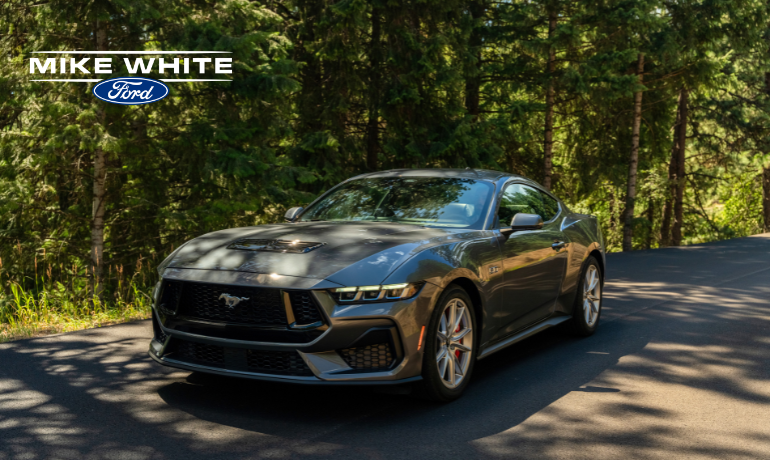Driving a new car off the dealer’s lot is always exciting, and almost nothing can dampen that feeling. Nonetheless, as many people will surely tell you, its value begins to depreciate almost immediately. That’s just the nature of cars—or nearly anything you buy. While it is not something you need to worry about too much, that reality can affect you significantly if your vehicle is totaled or stolen. The fact is, those events can leave you financially exposed if you lease or finance your vehicle.
At Mike White Ford in North Idaho, we understand that cars are a significant investment. They’re also a smart investment with tremendous value because they provide you and your family with comfortable and convenient transportation. Like every investment, though, buying and driving an automobile comes with risks. Accidents happen, and if you’re not prepared, losing that investment can have serious financial consequences. Consequently, when our customers purchase vehicles, we take time to make sure they understand all their protection options, including GAP insurance. Here’s what GAP insurance is, how it works, and why you may want to consider it when financing or leasing your next vehicle.
What Is GAP Insurance?
GAP stands for “Guaranteed Asset Protection” but the acronym “gap” is also a handy reminder of its purpose. This optional insurance helps cover the difference (or “gap”) between what your car’s fair market value is versus the amount you still owe on a loan or lease if the vehicle is declared a total loss due to theft or an accident.
For example, suppose you purchase a car and carry a $30,000 loan on it. Soon after, you get in an accident, and the insurance carrier declares your vehicle “totaled.” (Generally, an insurance company will make that determination if repairing the damage costs more than the car’s value.) If the insurance company assesses the fair market value of your vehicle as $25,000, you can recover that sum. But if you still owe $29,000 on the loan, you will still owe $4,000 to the lender after handing over the $25,000 from the insurance company. GAP insurance steps in to cover that shortfall.
Why Does the Gap Exist?
The gap between the car’s value and the amount you owe is due to depreciation. New vehicles lose value quickly—some by as much as 20% in the first year alone. If you made a small down payment or chose a longer loan term, it’s common to owe more than the car is worth during the first few years of ownership. After a while, however, the gap narrows or disappears. GAP insurance is only needed while the gap exists.
While this may seem like a minor issue, the financial gap becomes a real risk if your vehicle is stolen or totaled in a crash while you still owe a lot on it. Regular car insurance will only pay you the current value, not the amount you originally paid, the cost of replacement, or what’s left on your loan.
Who Should Consider GAP Insurance?
Not every driver needs GAP insurance, but it can be a smart move if:
- You made a small or no down payment: The less you put down, the more likely your debt amount will be higher than what the car is worth in the early stages of your loan.
- You chose a longer loan term (usually more than 60 months): Spreading payments over a longer term will reduce your monthly outflow, but it also means that your loan principal will not decrease as quickly.
- You’re leasing your vehicle: Many lease terms require you to purchase GAP insurance to protect you and the leasing company in case of a total loss.
- Your vehicle depreciates faster than average: Some car makes and models depreciate more quickly. If your vehicle’s resale value drops faster than your loan balance, GAP insurance can help.
What GAP Insurance Doesn’t Cover
While GAP insurance may be a financial lifesaver in certain situations, it’s important to understand what it doesn’t cover:
- It doesn’t pay for repairs to your vehicle.
- It doesn’t cover missed loan payments or late fees.
- It doesn’t cover the cost of a replacement vehicle; it only covers the loan difference.
- If you decide to trade the car, it won’t pay off your loan.
- It’s not a substitute for standard collision or comprehensive auto insurance; it’s an insurance supplement with a limited purpose.
How Can I Get GAP Insurance?
In most cases, GAP insurance is not required by law, but some lenders or leasing companies may require it as part of the loan agreement. In Idaho, it’s optional for most car buyers. However, Mike White Ford strongly recommends it in certain situations, particularly if you’re financing a new car with little or no money down. The cost of GAP insurance is relatively small given its potentially significant benefit.
If you purchase your vehicle at Mike White Ford, our finance team can help you decide whether GAP insurance is the right choice. We offer it as part of our vehicle financing packages, and we’re happy to discuss the pros and cons based on your loan terms, vehicle choice, and financial goals. You can also purchase GAP coverage through your insurer or a third-party provider; however, including it with your auto loan is often the most convenient option.
Whether you’re buying new or used, financing or leasing, our team at Mike White Ford can explain all your options, including GAP insurance. If you want a new or new-to-you vehicle, contact or visit a Mike White Ford showroom in Coeur d’Alene or Sandpoint. We’ll help you drive away with peace of mind.

